Mohamed and Ibrahim are twin brothers. They are registered at the AD Cissin 2 Child Development Center where 248 children are currently registered .
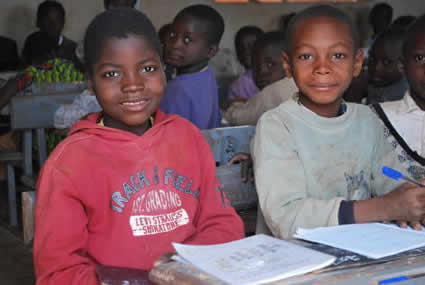
A team of four workers and eight volunteers take care of the children under the leadership of Etienne, the center’s director.
“When the child development center first opened, the area was very poor. I was living here and I used to see my neighbors trying hard to make ends meet. This area is a majority of Muslims and Catholics.”
At the beginning, religious differences brought about some difficulties in our work. Etienne recalls one memorable encounter:
“For our first recruitment, we went to talk with one family. When we talked about enrolling their children at AD Cissin 2, the father opposed — an outright refusal, insisting that he wanted nothing to do with Christians.”
That same father who did not want his children to take part in our program is the father of Mohamed and Ibrahim. But today, he continuously thanks and blesses the same men and women he initially rejected.
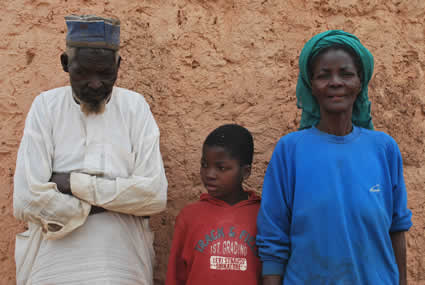
Blind for several years, Mohamed and Ibrahim’s father relies on his wife, Martine, to be the sole breadwinner. Martine is someone who benefits from the Highly Vulnerable Children Program started at AD Cissin 2.
This program is part of our Complementary Interventions and helps parents who struggle to provide for their children’s basic needs.
According to our Burkina Faso Health Specialist, Kevin Zongo, who is in charge of this program,
“Releasing such vulnerable children from poverty happens when we support their caregivers. However, this help cannot remain at the simple stage of food handouts, which increase dependence. It must go beyond that and seek to empower parents so that they become self-sufficient to help their children more. As the Chinese proverb says, ‘Better to teach a man how to fish than to give him fish.'”
The process of identifying highly vulnerable children starts by observing them among their peers. Then, home visits and discussions with the child’s parents help the center workers learn more details about the child’s living conditions.
This procedure determines whether there is a need to provide help to the caregivers in addition to the support their children already receive from the development center.
The selected parents go through training in handling a small business, and eventually they receive loans to help get them started with income- generating activities.
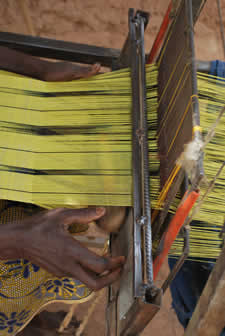
At AD Cissin 2, six children were identified as highly vulnerable. Five of their caregivers have benefited from loans of 25,000 CFA francs (about 50 U.S. dollars) to fund income-generating activities such as weaving, breeding and catering.
After a year of implementation, Etienne expresses his appreciation:
“When we gave the loans, we were not expecting the caregivers to become wealthy immediately, but to be self-sufficient and take care of their basic needs.
“To our great surprise, caregivers are pulling through.”
Mohamed and Ibrahim’s father still remembers when his twin sons joined our child development center.
There was a real gap between them and the other children; they were sickly, weak, lonesome and dirty.
Like the other children, the twins wanted to bring their meals home on Thursdays to share with their parents and siblings.
When looking at Mohamed and Ibrahim today, it is difficult to imagine how they suffered before joining the program. The twins’ mother, Martine, explains,
“I used to sell vegetables and my husband worked as a mason. But when I gave birth to my twins I could not continue my activity. Unfortunately, at that time my husband’s eyesight started to decline.
“I wandered in the streets holding a can and carrying my twins (one on my back and the other one on my chest), and begged for my family’s daily food for seven long years.”
Those hard times left scars on Mohamed, who currently suffers from epilepsy. The child development center is providing him with treatment.
When the twins turned seven, their mother decided to stop begging. She learned to weave in order to pay for their school fees. It was at that time that Mohamed and Ibrahim were registered at AD Cissin 2.
Martine was greatly relieved to see the weight of her burden reduced. But she still had to work hard to meet her family needs: food, clothes and school fees for the twins’ older brothers. Though committed to hard work, Martine hardly succeeded in changing the family’s living conditions, and sometimes she resorted to look for food support from charity organizations when available. Even with some outside support,
“Sometimes we would miss one meal a day.”
Thanks to the Highly Vulnerable Children program, Martine received training in income generation and received a small loan from Compassion for her business. That was the greatest opportunity for her to boost her work.
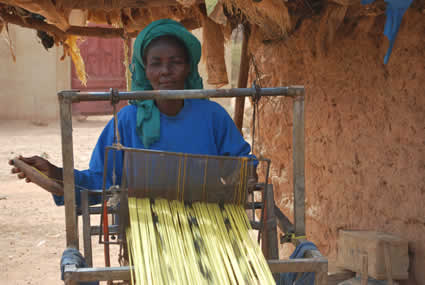
As a weaver, Martine bought material and increased her production. She weaves traditional cloth that she sells to customers.
With the profit she makes since she received her first loan, Martine is now able to pay for her older children’s school fees and provide food for the family. Moreover, she was able to pay back her first loan and receive a second one.
Although this family still faces challenges, Martine is thankful for all the support Compassion has provided. Now that she works, she is no longer the beggar whom people used to see on the street and in front of their homes.
Outside of the economic benefit of her job, the moral and social impact this opportunity has made on Martine’s life stands out.
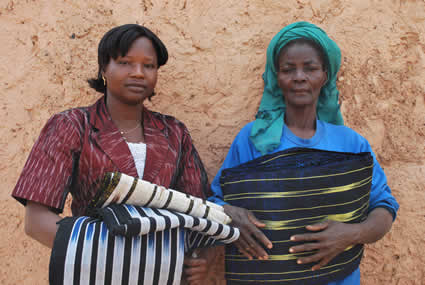
In fact, working allows Martine and her family to win back their reputation. She now looks like other women of the community and feels proud to keep her dignity by earning bread for her family.
Martine works with other women who also do weaving. They collaborate on a friendship and equality basis.

The moral and social impact of the Highly Vulnerable Children program is also seen in Mohamed and Ibrahim’s lives. Etienne explains,
“Now the boys play, eat and study with their fellow students without being rejected, as had occurred in the past. And, like their mother, they have overcome inferiority complexes; they are no more the children of the beggar. Even Mohamed’s health has improved.”
At school, Ibrahim, who is in grade 4 primary school, is a good student according to his teacher. Last year he earned 7.92/10 as his average mark.
“Mohamed (in grade 2) had health troubles and missed his last-term exam due to his sickness. But he is catching up quickly. Since the child development center took him to a medical center for epilepsy treatment, he has felt better.”
The Highly Vulnerable Children fund has brought joy to the family of Mohamed and Ibrahim. And their mother’s business keeps booming.
“The support I receive is good and I am sincerely grateful to God and to those who provide for it.”
Make a donation to help highly vulnerable children.

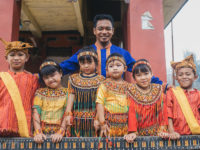
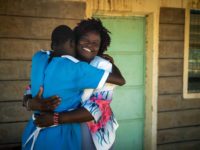
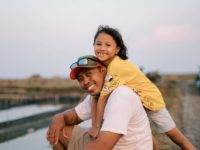
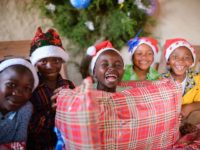


5 Comments |Add a comment
hmm 🙂 wonderful. I truly don’t believe we “Americans” will really grasp the disparity of the children we sponsor. We have a heart that enables us to feel compassion and act on it, yes, but we wont understand what they ultimately will go through because our worlds are so different. But that’s why we take trips to see for ourselves, watch the videos, buy the books, and financially support so we can have an idea.
What WE have to offer them out of our abundance will ALWAYS be enough for them to uphold and sustain a life of survival for themselves. Its amazing that that is all they really want. I will forever thank God for the big hearts of the sponsors.
Thanks for telling their stories, for making it real, for giving us a peek into a world so different than ours.
Reading this story and seeing Martine’s beautiful cloth makes me wish I could purchase some myself. What a wonderful witness to that father and to the community surrounding this family!
This is wonderful news! I wonder if my sponsored little girl’s mother in Burkina Faso would qualify for this program. She has 3 kids, her husband died, and last week I got a thank you letter for money I sent saying that her mother was not able to feed them!!! My heart breaks because of the struggle they are have just to survive.
Praise Jesus for His mighty work through this organization.
Thank the Lord for Compassion and the work they are doing! When I first started learning about the scope of all of the Complimentary Interventions, I was blown away by the many, many ways Compassion can be there for these families.
I think that the cloth Martine weaves is simply beautiful. I can only imagine how it raises her self-esteem along with the family’s income.